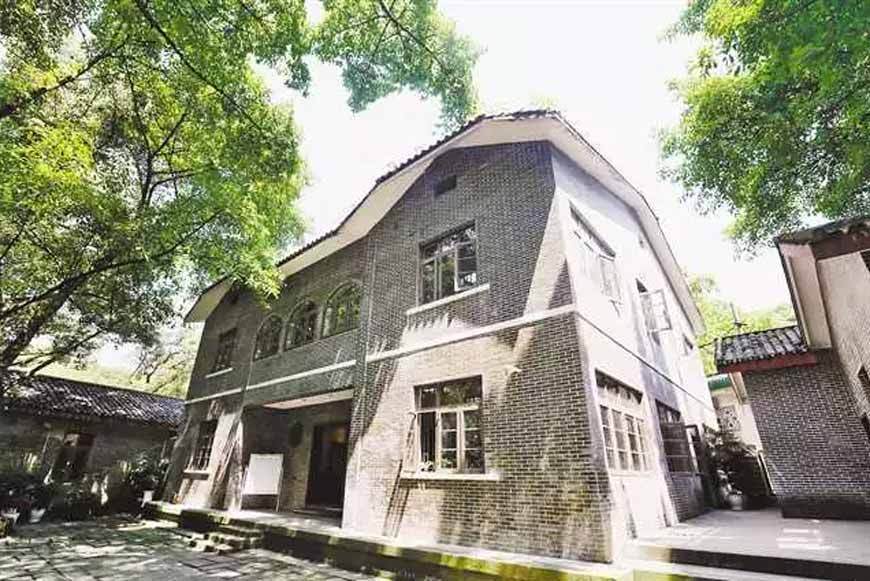Speaking of Chongqing, many people will first think of Hongya Cave, "light rail train passing through the building" and other Internet-famous scenic spots. In addition to these bustling places, Chongqing also boasts many old buildings with stories waiting for people to discover and get acquainted.
In 1891, Chongqing became China's first inland treaty port open to foreign trade, and foreign governments have come to Chongqing to set up embassies and consulates. Until the Chinese People's War of Resistance against Japanese Aggression, more than 30 countries had set up embassies and consulates in Chongqing. At that time, Chongqing's international status was significantly enhanced, and it was listed as one of the four command centers for anti-Fascism in the world together with Washington, London, and Moscow.
The sites of the embassies and consulates that have been preserved carry the memory of the history. Nowadays, some of them are preserved in the downtown areas, and some are hidden in the labyrinth-like alleys. Just visit these places, and you can look through the old buildings for traces of history that have been lost in the ages.
Site of the Australian Embassy
During the War of Resistance, the Australian Embassy was moved to the west region with the Nationalist Government. The embassy had two buildings, and the main building was a two-story building with a brick-wood mixed structure. In 1940, the Australian Embassy in Chongqing was built near Eling and moved to Nanjing after the end of the War of Resistance in 1946. After the opening of Eling Park in 1958, the site of the Australian Embassy was incorporated in the park for protection.

the Australian Embassy
Site of the Danish Embassy
The embassy was built in the early days of the War of Resistance. The only existing building now is a brick-wood mixed structure with an eclecticism style with a width of 14.7 meters and a depth of 7.5 meters with a height of 7 meters. The exterior of the building is provided with an eave gallery.
It was established in October 1938, and on August 21, 1941, the Danish government announced to recognize Wang Jingwei Regime in Nanjing and to recognize the puppet regime of "Manchukuo" supported by Japan. China thus severed diplomatic ties with it, and the Danish Embassy was closed. Now, the whole courtyard is surrounded by green plants and full of life.

Danish Embassy
Site of the Turkish Embassy
The Turkish Embassy is in the same compound as the Danish Embassy and is separated only by a wall from the Australian Embassy. Now there is only one bungalow in a row, with beautiful colors and lush trees all around. In front of the court, the rockery stones overlap one by one, and the streams murmur, creating an elegant environment.

Turkish Embassy
Site of the British Consulate
On April 1, 1891, the British Consulate was officially established in Minsheng Road, Yuzhong District, and thus Chongqing had its first foreign consulate. In 1900, it was relocated to Lingshi Lane, Qixinggang, Yuzhong District. The continuous arched cloisters at the front of the building continue the consistent style of British colonial architecture in the Far East. At the shaded cloister, people can overlook the Yangtze River. But now the old building no longer exists.

the old site of British Consulate
Site of the Chinese-British Liaison Office
From 1939 to 1946, the Chinese-British Liaison Office was established here. The building was renovated and opened to the public in June 2019. In addition to its special historical value, it is also used as a cultural space to launch cultural and artistic activities. After the renovation, the interior of the building is decorated with an exquisite chandelier, French-style carve patterns or designs on woodwork, and pillars. The ivory painted walls seem to enable people to know the history of the building.

Chinese-British Liaison Office
Site of the Provisional Government of the Republic of Korea
About 10 minutes' drive from Eling Park, you can find the restored building of the Provisional Government of the Republic of Korea at No. 38 Lianhuachi. The exhibition hall has 38 rooms in five buildings, covering an area of 300 square meters. The six years in Chongqing were also the most important and active six years for the Provisional Government of the Republic of Korea to launch the campaign for national independence in China. It also became the last office of the Provisional Government of the Republic of Korea in China.

Provisional Government of the Republic of Korea
Site of the United States Embassy
The U.S. Embassy, located at No. 1, Jiankang Road, Lianglukou Street, Yuzhong District, Chongqing, was one of the embassies established by the U.S. government in China during the War of Resistance. In 2000, Chongqing Municipal People's Government declared it as one of the first batches of municipal cultural relics protection units.

the old site of United States Embassy
Site of the French Embassy
This white-walled, black-tiled building is the French Embassy in Chongqing. In May 1940, the French Embassy in China funded the construction of this building. In 1941, the embassy in Lingshi Alley of Yuzhong District was bombed by Japanese planes, and then it was relocated to Nanshan, and its embassy mission ended until the end of the War of Resistance.

Site of the French Embassy
As time goes by, these embassies also changed, but the renovated buildings still play their part. In your leisure time, just visit these embassy sites to look for traces of history, to see if they still preserve the charm of the old days.

Site of the French Embassy
By continuing to browse our site you agree to our use of cookies, revised Privacy Policy and Terms of Use. You can change your cookie settings through your browser.
For any inquiries, please email service@ichongqing.info